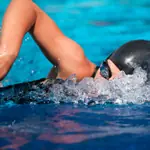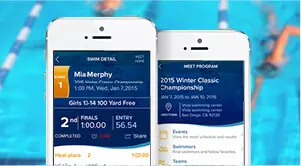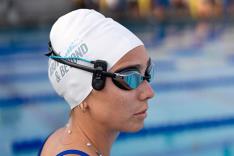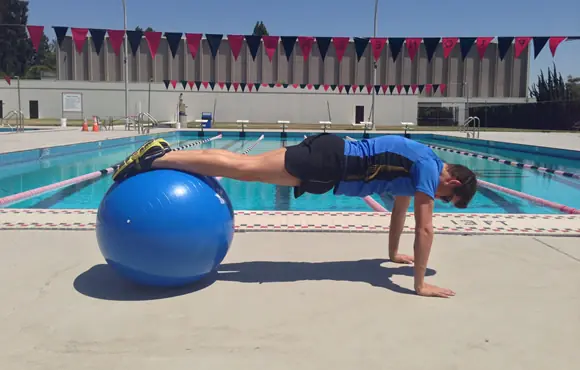
The high elbow is achieved with a vertically positioned hand and forearm that establish the "catch" in swimming. For the triathlete, a high elbow catch produces greater propulsion potential by increasing the amount of water the fingers, hand, forearm and upper (inside) arms can hold.
Learning this position can take a lot of laps but there are shortcuts. In this article I'll outline the keys to learning how to make a better and more efficient catch. In order of importance, the following are the steps to learning how to shape your body and get a higher leveraged elbow when swimming.
Flexibility: If you have restricted motions in the shoulders, chest and/or back muscles, no amount of technique training or coaching will overcome these potential movement limiters. So, it's important to assess your functional capacity for moving out of the water first.
One way to do this is by having a musculoskeletal assessment with a physical therapist, or working with a coach to examine shoulder and upper torso movement. Dryland exercises can be determined to help you move more functionally, which in turn will allow for better swimming, cycling and running technique, and help with lessening recurring injury.
Body Position: Central to swimming, cycling and running is the ability to maintain a neutral body position. Once again, if there are limiters (flexibility, mobility, stability) then, those can affect body position and make it difficult to do what an athlete is trying to learn or what a coach is instructing.
TIP: On dryland, standing tall with eyes forward and chin level, extend the right hand overhead. The left hand is on your other side. This is the same position—a level, symmetrical and balance position—that you want in the water. Streamlined, narrow and with few, if any, asymmetrical motions that might disrupt this elongated shape in the water.
Length: The swimmer wants a long body (vessel) to move through the water. By extending the overhead (entering hand/arm), the torso, hips, legs and feet taper, which decreases drag and provides opportunity for symmetry and better movements with the catch.
TIP: DO NOT GLIDE ? A common stroke error, especially with beginning, intermediate and adults learning to swim, is they are trained to "stretch" forward and "glide". This is only half correct. Yes, you want to lengthen and reach forward. This allows the hips to release and the body to narrow. It also provides more water holding potential (more water to be pulled against).
TIP: Time your "length" with the simultaneous "release" of the pulling arm. That is, when the pulling hand exits, the lengthening hand should begin the downsweep and catch.
Catch: With a horizontal, vertical and laterally balanced body as your principal (constant throughout the stroke), attaining the high elbow catch is more easily accomplished. A level body simplifies positioning and technique instead of increasing energy to overcome amplified water resistance due to less than optimal body positioning.
TIP: The first part of the catch occurs during the downsweep. By gently capturing water (following the entry and full extension-length), beginning with a slight flexion of the wrist, you are set to synchronize with the fingers, hand and forearm. To achieve this, keep the elbow very close to the surface (pointed upwards), rotate the bicep inwards as the fingers, hand and forearm unhurriedly pivot and arc downwards.
- 1
- of
- 2
About the Author

www.evanscoaching.com | marc@evansoaching.com | YouTube | Facebook
Get ACTIVE on the Go


Meet Mobile
Swim smarter: heats, lane assignments and real-time results in the palm of your hand.
Available for iOS | Android







Discuss This Article